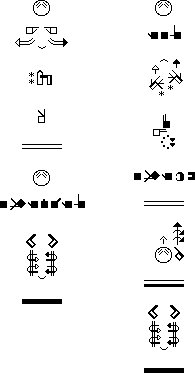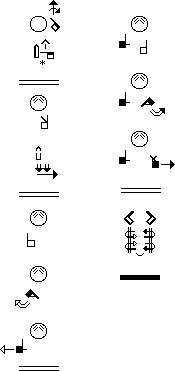Two Notation Systems for Signed Languages: Stokoe Notation & Sutton SignWriting Joe Martin Western Washington University Martinj4@cc.wwu.edu |
||||||||||||
|
ORIGINS continued... Valerie Sutton When writing the movements of signed languages, Sutton had no need to adopt the theoretical assumptions of linguistics, to presuppose a finite set of smallest parts, to look for minimal pairs or even to analyze things for meaning. She was free to use the different goals and methods of dance notation, to "see and draw" using a schematic approach. Her goal was simply to record movement. When Sutton applied this to recording signed languages, she realized that to record the movement is also to record the language; "I also began writing Danish signs, and even though I did not know what they meant at the time, Deaf people whom I met in Denmark could read the signs and they knew what they meant" (Han 2), and even now, "I never ask what the sign means - I only try to capture how it is executed." (Sutton 21 Aug 99). This approach is unique. SSW doesn't even require one to know that what they are writing is language. The notator serves only to transmit the visual image, the same as a recording would do. We might compare this with Crystal's "Joint Reading" (right) and ask, "Is writing down pictures of words the same as writing down words?" See Figure 5b.
A version of the stick figure, called Full Body SignWriting, is still used in Denmark today, but most users have chosen to simplify it after much consultation with native users and by general consensus. This constitutes a linguistic analysis in a sense, but is not based on theoretical assumptions, it simply follows the process of change that all languages, and all scripts naturally go through. Nor has it been used prescriptively. Irrelevant features (like brown socks) have been dropped from the regular notation but it is left up to the user to write them in if they so desire. In this sense SSW functions like the IPA; people can choose to write either a deep transcription (one showing every possible phonetic detail) or a shallow transcription, showing only as much as needed to get the message across. This is discussed in the article History of SignWriting, Chapter 7; The Evolution of Writing Styles. See Figure 5d.
|
||||||||||||
|


